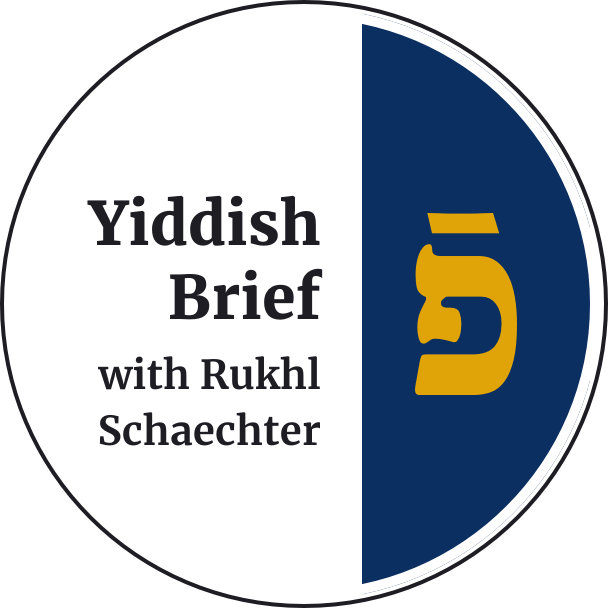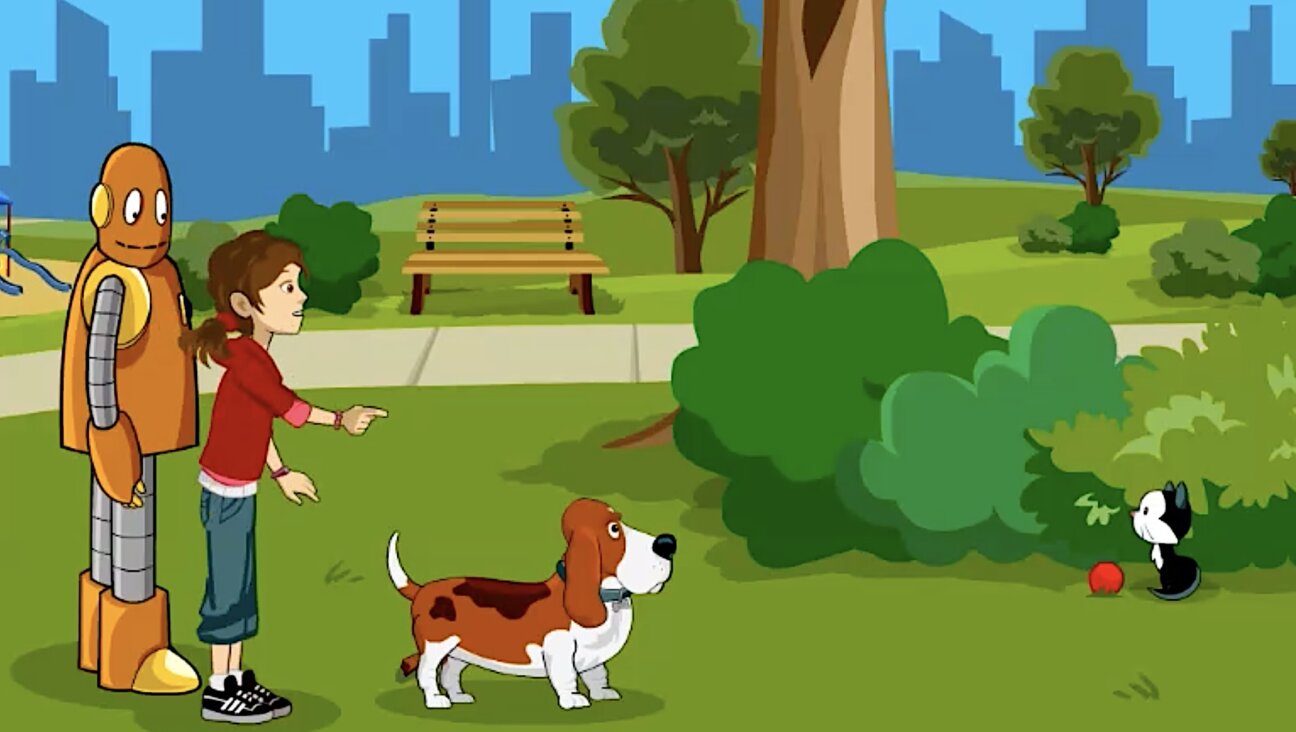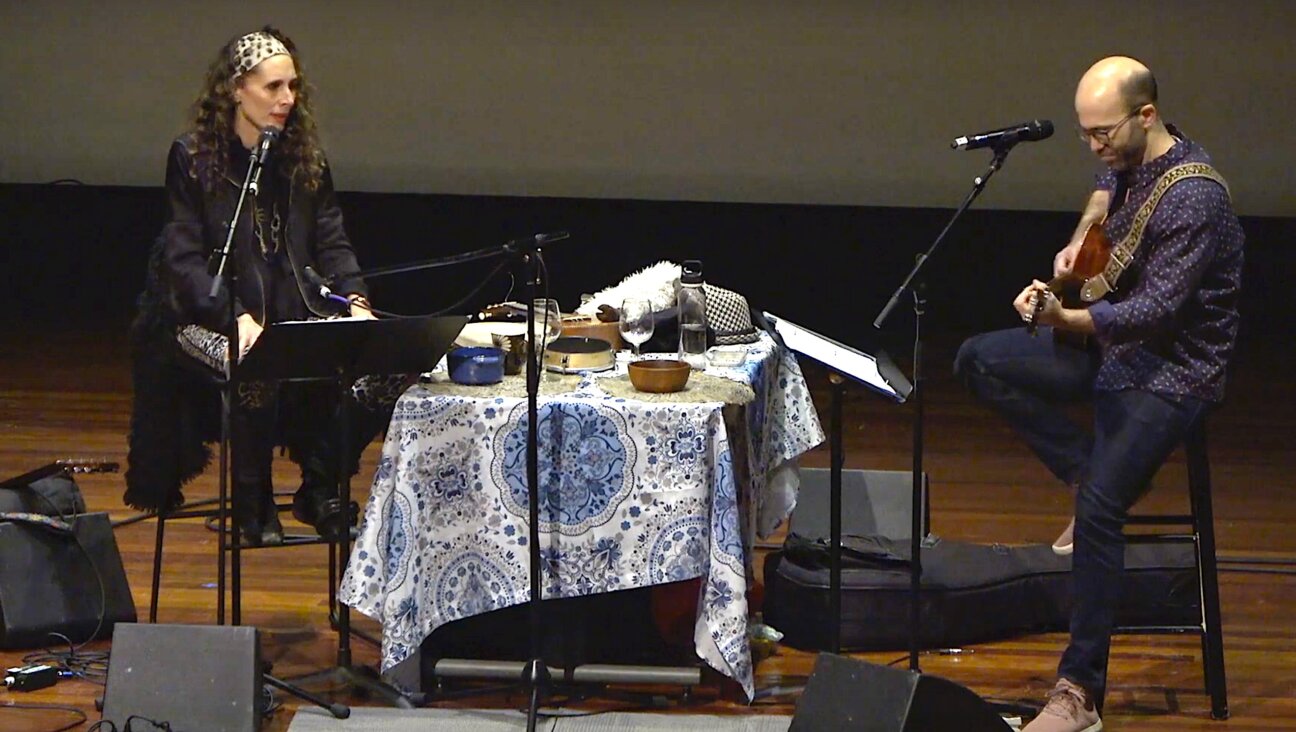Five Passover shtetl traditions you’ve never heard of

Image by Yehuda Blum
Some of the best descriptions of shtetl life come from the stories and essays by the Yiddish writer B. Gorin (1868-1925).
Author of the first book about the history of the Yiddish theater, Gorin also had an eye for writing about everyday life, both in Europe and in America. In his book “Fargesene nigunim” (“Forgotten Melodies”), published in 1919, he wrote a good deal about the holidays. The chapters on Passover are filled with curious details about long-ago Passover traditions. Here are just a sampling:
- Passover was the most profitable time of year for tailors, shoemakers, and furriers
On the spring holiday of Passover, according to Jewish tradition, the earth is reborn and so are its inhabitants. Clothes were ordered from the tailor weeks in advance and worn for the first time on the day before Passover. When children wore new clothes, people would say: “Tiskhadeysh!” (“Wear it in good health!”) According to Gorin, old women also said “Farnits gezunt!” (“Use it in good health!”) and “Gezunt zolstu trogn!” (“Wear it in good health!”). Interestingly, Christians also have a tradition of wearing new clothes in the springtime, for the holiday of Easter.
Of course, not everyone could afford new clothes every year, which is why the clothes children received were usually too big, the logic being that this way they would be able to wear them for three to four years. It must have been quite funny to see kids stumbling around in clothes that were far too big for their little bodies.
- Passover brought cigarette smokers together
Gorin included an interesting observation of cigarette smokers on Passover. Smoking is permitted on the holidays, but lighting a match can only be done from an existing flame. Well then, how does a smoker light his cigarette when he’s away from home? Gorin described it like this: if a man was seen walking down the street, smoking a cigarette or a pipe, someone who needed a light would approach him and use the smoking man’s cigarette to light his own. The second person would walk on, and then other passers-by might in turn ask him if they could use his cigarette to light their own, and so on. Everyone helped each other.
- Kids played a game with nuts during Passover
A common way kids passed the time on Passover was to play “Nuts”. According to the rules, one nut (usually a walnut) would be rolled on the ground. This nut was called the Rosh (chief). Then, the other children would roll their own nuts. The one whose nut got closest to the Rosh was the winner and his prize was to keep all of the nuts for himself. It’s a bit like the Italian game of bocce ball, but played without a board.
- Poor people earned money by baking matzos
One of the loveliest traditions followed before Passover was the collective baking of matzo. It was a good way for poor people to earn some money and do a mitzvah at the same time. This tradition is still practiced today in Hasidic communities.
Gorin writes about seven roles people took on in these bakeries: the water pourer, the flour pourer, the roller, the kneader, the hole-maker, the person who put the matzo in the oven, and the person who selects the best matzos for distribution.
Usually, these matzo bakers are described in Yiddish literature as a lively, cheerful group of people. But Gorin disagrees. He writes that the workers took breaks whenever possible because they often needed to stand fourteen hours a day as they rolled the dough constantly, causing their hands to become swollen and ache.
- It was the grandmothers, not the parents, who made sure their children and grandchildren celebrated Passover
Gorin also wrote about Passover on the east side of New York, particularly about the generational divide between the older Jewish immigrants and their children. The children who grew up in America seemed eager to forget the Jewish rituals, but the more traditional Bubbes made sure that their kids and grandkids prepared for Passover and held Seders.
Children were fascinated by the legend of Eliyahu Hanovi (Elijah the Prophet) who makes a stop at every Seder on Passover night, about his righteous deeds and the special goblet set aside for him. Waiting for Eliyahu to “arrive” helped them stay awake.
Even though the older relatives were the ones urging the family to keep the Jewish traditions, often chastising their grown children and their spouses for becoming too secular in America, they acknowledged at the Seder that at least in America the Jews didn’t live like slaves (always living in fear of persecution), as they did in Russia. In America, Jews could finally relax. Sure, there were other worries, but much smaller ones.
One of Gorin’s stories ends like this: “It had been years since they all celebrated a Jewish holiday so happily, without fear. And yet, the memories of life back home in Europe lingered like a shadow hanging over the festivities.”
It’s clear that for Gorin, Passover wasn’t just a holiday connecting us to the history of the Jews in ancient Egypt, but one that connected us viscerally to the much more recent history of Jews in the shtetl and, of course, in New York.























